<> Athyma nefte (Cramer,1779) <>
the Colour Sergeant ผีเสื้อจ่าเมียสีส้ม
Click on any photo to see all photos full size in Lightbox
Additions and corrections to the information provided on this page is always welcome. Please use the Contact form.
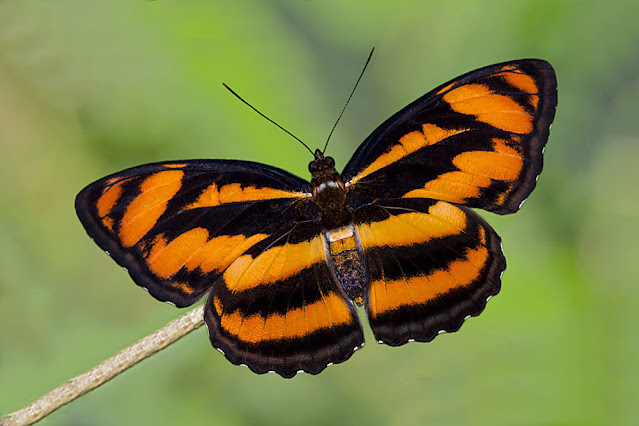
Photo taken at Chiang Dao Nature Sanctuary, Chiang Mai. Thailand ♀ 540m a.s.l.

A forest butterfly that is quite widely distributed and fairly common. The species is sexually dimorphic and the sexes look very different, particularly in regards to colour (see photos). The female is also larger than the male. There are some noticeable variations between sub-species, especially those from the most western part of the region. They are strong fliers and the males are very territorial.
Athyma nefte flies all year round and is multivoltine with several broods per annum. The adult female lays her eggs singly at the tip of a leaf on the host plant. When the egg hatches the larva consumes the eggshell as its first meal.
Synonyms and previously used names: Papilio nefte, Pantoporia nefte, Athyma urvasi, Athyma nivifera, Parathyma nefte
Taxonomy: Animalia - Arthropoda - Insecta - Lepidoptera - Nymphalidae - Limenitidinae - Athyma - nefte
Regional subspecies: Athyma nefte asita (Myanmar, N.Thailand, Laos, Cambodia, Vietnam, S.China-Yunnan), A.nefti seitzi (S.China), A.nefte subrata (S.Thailand, Malaysia, Singapore, Philippines), A.nefte subratina (Sumatra-Indonesia), A.nefte yasana (Bali-Indonesia)
Regional Distribution: Nepal, Bhutan, Myanmar, Thailand, Laos, Cambodia, Vietnam, China, Malaysia, Singapore, Indonesia, Philippines
 |
| Pak Ou, Luang Prabang, Laos ♂ 380m a.s.l. |
Habitat: Athyma nefte is a forest dependent species and is found in evergreen montane forest at low to high elevations, often near water. It has been recorded up to 1600m a.s.l.
Flight time: all year round, depending on location Wingspan: 40-60mm
Life History: egg 3 days instar 1 3 days instar 2 2-3 days instar 3 3 days instar 4 3-4 days instar 5 4-5 days pupa 6-8 days Total egg to adult 24-29 days. All times are approximate.
Larval Hosts: Breynia fruticosa, Glochidion borneense, Glochidion calocarpum, Glochidion ellipticum, Glochidion eriocarpum, Glochidion heyneanum, Glochidion lanceolarium, Glochidion puberum, Glochidion rubrum, Glochidion superbum, Glochidion wrightii, Glochidion zeylanicum, Phyllanthus sp. (Phyllanthaceae), Mussaenda frondosa, Mussaenda kerrii, Mussaenda philippica, Mussaenda sanderiana (Rubiaceae), Adenanthera pavonina (Fabaceae). Actual host plant used depends upon location and availabilty of plant species.
Adult Food Sources: Nectar - Mikania micrantha, Tridax procumbens (Asteraceae), Zanthoxylum avicennae (Rutaceae), Lantana camara (Verbenaceae), Melastoma malabathricum (Melastomataceae). Other - mud puddling, overripe fruit, animal dung, ripe fruit of Rhododendron (Melastoma)
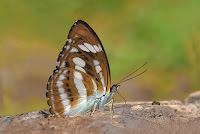 |
| Doi Suthep-Pui National Park, Chiang Mai, Thailand |
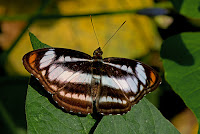 |
| Chiang Dao Nature Sanctuary, Chiang Mai, Thailand ♂ |
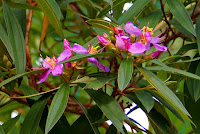 |
| Melastoma malabathricum, a nectar source |
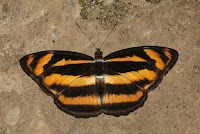 |
| Doi Suthep-Pui National Park, Chiang Mai, Thailand ♀ |
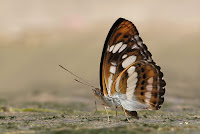 |
| Chiang Dao Nature Sanctuary, Chiang Mai, Thailand |
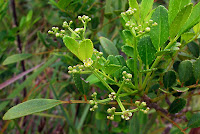 |
| Zanthoxylum avicennae, another nectar source |
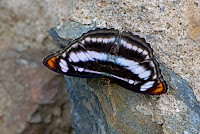 |
| Chiang Dao Nature Sanctuary, Chiang Mai, Thailand ♂ |
 |
| Mussaenda frondosa, a larval host |
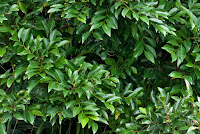 |
| Glochidion rubrum, another larval host |
Links to other pages in this series for species in the same subfamily
Athyma perius
Auzakia danava
Euthalia alpheda
Euthalia lubentina
Lasippa viraja
Limenitis asura
Neptis cartica
Neptis miah
Pantoporia hordonia
Sumalia daraxa
Athyma pravara
Bhagadatta austenia
Euthalia anosia
Euthalia monina
Lebadea martha
Limenitis dudu
Neptis clinia
Neptis nashona
Pantoporia paraka
Sumalia zulema
Athyma ranga
Cynitia cocytus
Euthalia evelina
Euthalia patala
Lexias dirtea
Moduza procris
Neptis hylas
Neptis nata
Parthenos sylvia
Tanaecia jahnu
Athyma selenophora
Euthalia aconthea
Euthalia franciae
Euthalia phemius
Lexias pardalis
Neptis ananta
Neptis magadha
Neptis soma
Phaedyma columella
Tanaecia julii
